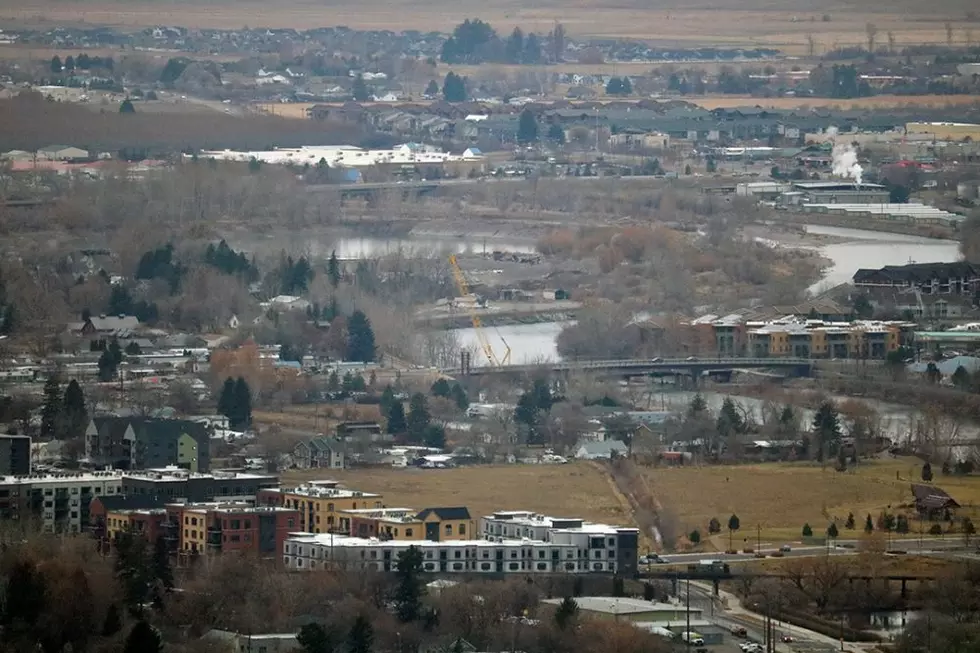
New Missoula County technology reveals growth boom, lagging housing market
Over the first five months of the new fiscal year, Missoula County has recorded 29% more property related documents than over the same period last year.
Added up, it represents a 32% increase over the nine-year average and is just one data-driven nuance of a growth trend that isn't on its way, but has already arrived.
“We are recording 57% more documents per person than the nine-year average over the same five months,” said Shyra Scott with the county's clerk and recorder's office. “That equates to 413 more documents per person each month than last year.”
The recorder's office on Wednesday showcased new technologies intended to track a range of housing information and reduce the time it takes to bring a project from concept to approval, while placing it into some form of historical context.
The increase in documentation related to properties, applications, mortgages and other related topics has already pointed to a new wave of growth in Missoula County, along with the growing demand for housing that comes with it.
“The housing market these days is exceptionally busy,” said Scott. “Our experts don't anticipate that is ending in the next year or so. What's different from this boom than the boom we saw back in 2006 is that it's true demand. It's not a financially fueled boom, but a change in consumer behavior.”
Since the pandemic set in back in March, real estate agents in Missoula and across Montana have reported a new batch of buyers looking to leave some of the nation's major cities for a different way of living.
Missoula County has captured those claims in data using a suite of new technologies, including its Subdivision and Survey Tracker. The tracker provides a list of valuable information, from subdivisions that have been platted, projects in planning, and newly created properties.
The county can measure the activity against migration trends offered by other services.
“That's how we're tracking subdivision and exemption projects as they go through the county process to streamline the active review time,” said Sam Scott with the recorder's office.
“That data is feeding into iSAM (Interactive Subdivision Approval Monitor), which presents three years of data so we can start to see some of those trends and patterns, the types of projects, the size of the projects, where they're happening and how long it's taking.”
Housing experts in Missoula have said the metropolitan area needs 600 new homes annually to keep pace with growth and demand. But three years of county data says the region has created only 756 new parcels over that span.
“While that doesn't necessarily equate to a home being built and sold, it's a pretty good barometer of the market as a whole,” said Sam Scott. “The numbers just reinforce everything we're hearing about our housing prices.”
In the first 11 months of 2020, the city and county have created just 75 new parcels, and 71 of them are located in the county. While the numbers are down from 2018, Sam Scott attributed them to a change in development styles.
“Some of that decrease can be explained by the transition to condo and townhome development rather than subdivision projects,” he said. “Since 2018, we've had about 50 projects with not quite five units per project for a total of 249 new units over the last three years. That's included in that 756 number.”
The new data does more than reveal trends in housing and development activity, but is also intended to reduce the time it takes to bring a project to fruition. Since the technology was unveiled earlier this year, the county said final plats are occurring 10 weeks faster and survey certificates are happening four weeks faster.
Amended plats are happening nearly six weeks faster.
“What we've been hearing from developers is that it can take years to achieve subdivision approval,” said Shyra Scott. “Our data shows, even after approval is granted, the length of time from receiving approval to filing a survey that creates those lots runs an average of five to seven years. You're looking at trying to make a 10-year market projection, and a lot of subdivisions are costly to develop.”
While county officials placed some of those delays on the development community, the new technology can help streamline the process, helping builders keep tabs on their project while ensuring county departments are in better communication.
“We're trying to collaborate more and make sure these processes can happen concurrently,” said Tyler Gernant, the county's clerk and treasurer. “Concurrent review will dramatically decrease the amount of time it takes to get from concept to reality.”
However, Gernant said the city doesn't currently have a similar tool and the county is handcuffed to some degree by outdated zoning that doesn't align with current building trends and housing demands.
“The county doesn't have as many options for developing townhomes and condos because the area has to be zoned, and there's not comprehensive zoning in Missoula County,” Gernant said.
Missoula County Commissioner Josh Slotnick said that's about to change.
“It's happening and it's less than a year away,” he said.
